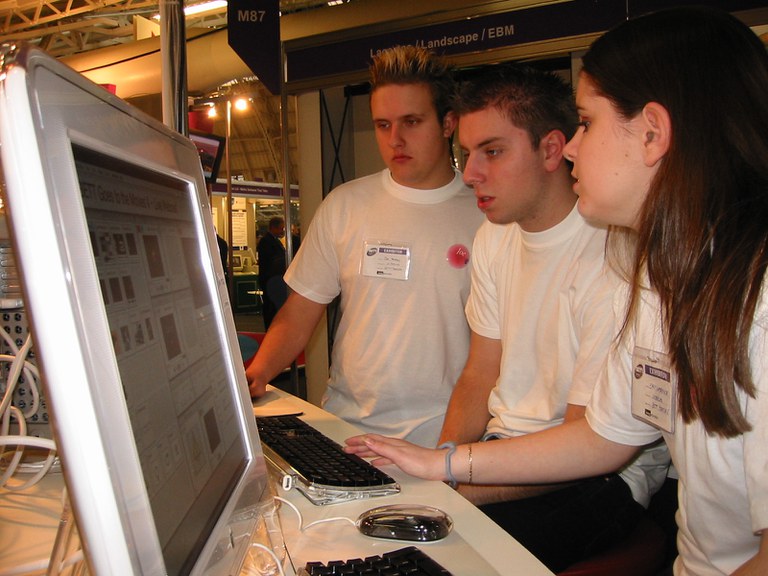BETT 2003
| When |
Jan 08, 2003
to
Jan 11, 2003 |
|---|---|
| Where | London |

We collaborated with Hedley Walter High School, Brentwood, bringing four students to manage a broadcast studio which attempted to maintain programming to four computers located around the BETT show space.
Here is the plan:
BETT GOES TO THE MOVIES II
8-11 January 2003 • Olympia • London
Feature Area, Grand Hall Gallery Level - next to Seminar Theatre E
Ultralab and Film Education have joined forces for BETT 2003 to demonstrate the possibilities of digital video within educational contexts in a feature sponsored by Apple. Meshing together their own specialities and expertise, the two organisations will demonstrate the potential of digital video (DV) by examining four areas : creativity, composition, performance and content. These areas should not be seen in isolation however, but as part of an interconnected process which will lead to improved standards of teachers’ and students learning through moving image production.
Creativity – everything starts with the idea moving through to its practical realisation through DV. This is not simply giving students a camera and telling them to get on with it. It demands consideration of audiences, message, purpose and constraints as well as a capacity to experiment, innovate and enjoy.
Composition – students (and their teachers) have grown up with tv and film, but need to know how to unlock the aesthetic possibilities of the moving image medium: how shots can be framed; how sequences can effectively be edited together; how sound can enhance images as well as change their meaning. Composition always bears in mind the culture and symbolism of film and the power of sound and image to affect emotion through the grammar already familiar to audiences. The task is to make explicit what is already implicitly understood.
Performance – the finished product can now be broadcast around the world live via the internet or distributed in a number of formats ( CD-ROM, DVD, web page). But the final outcome might not rely only on footage shot by students. For webcasting it could also require additional live material, linking and mixing. Skills of planning, writing and scheduling need to be developed, as well as those of gauging audience reaction and designing interactivity. For the ‘static’ formats, developing interfaces, hypermedia designs and structures to contextualise and navigate DV material provides additional challenge.
Content – learners should be aware of other moving image footage, for example archive and feature film, which can be accessed and which students can use to experiment on a variety of moving image forms such as documentary, news, narrative and non-narrative sequences. Building on such ‘found material’ can help make work on composition and deconstruction the focus within the constraints of school time.
(Words: 495 )


